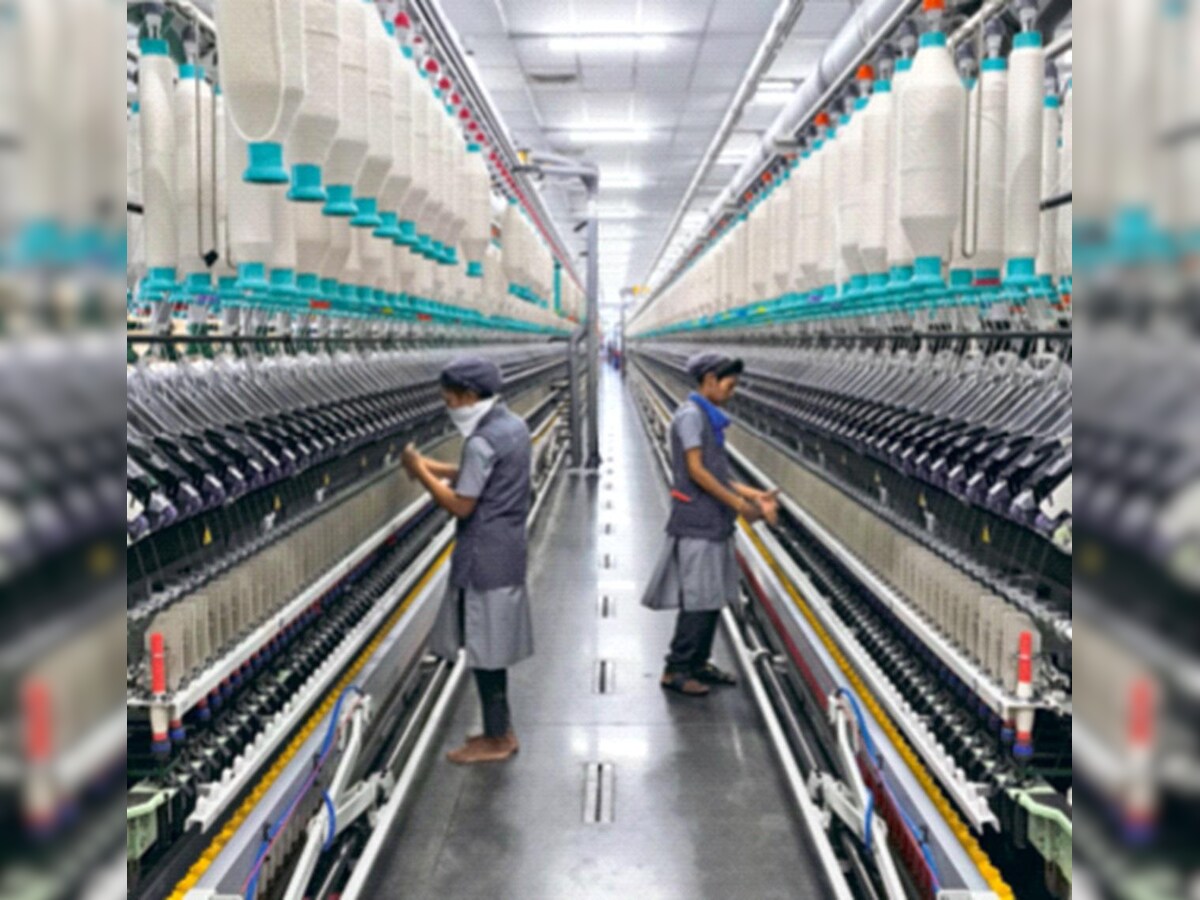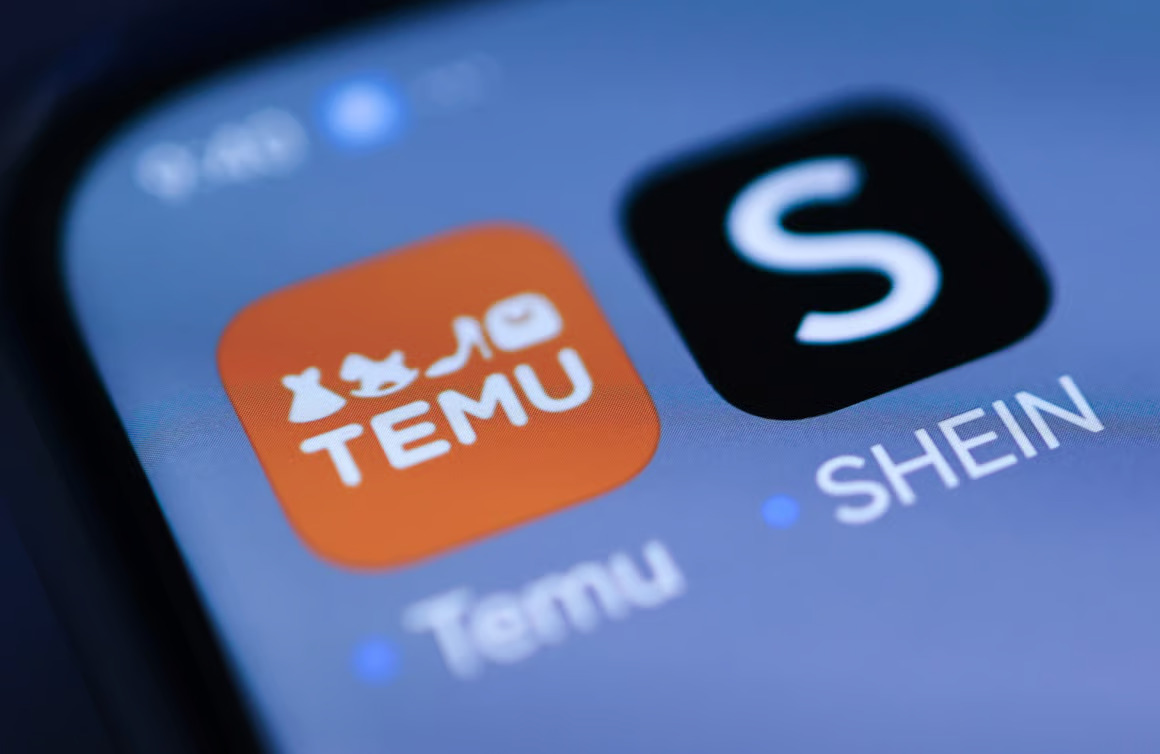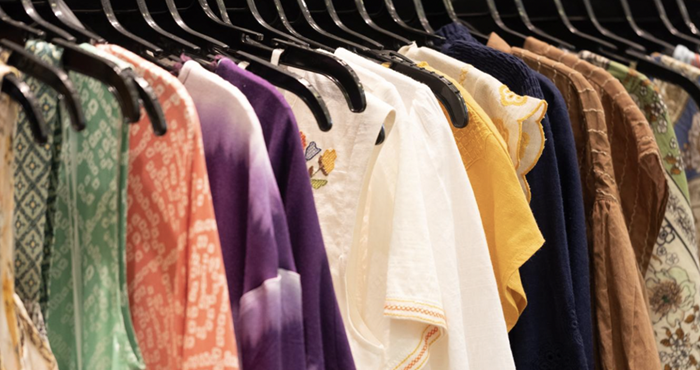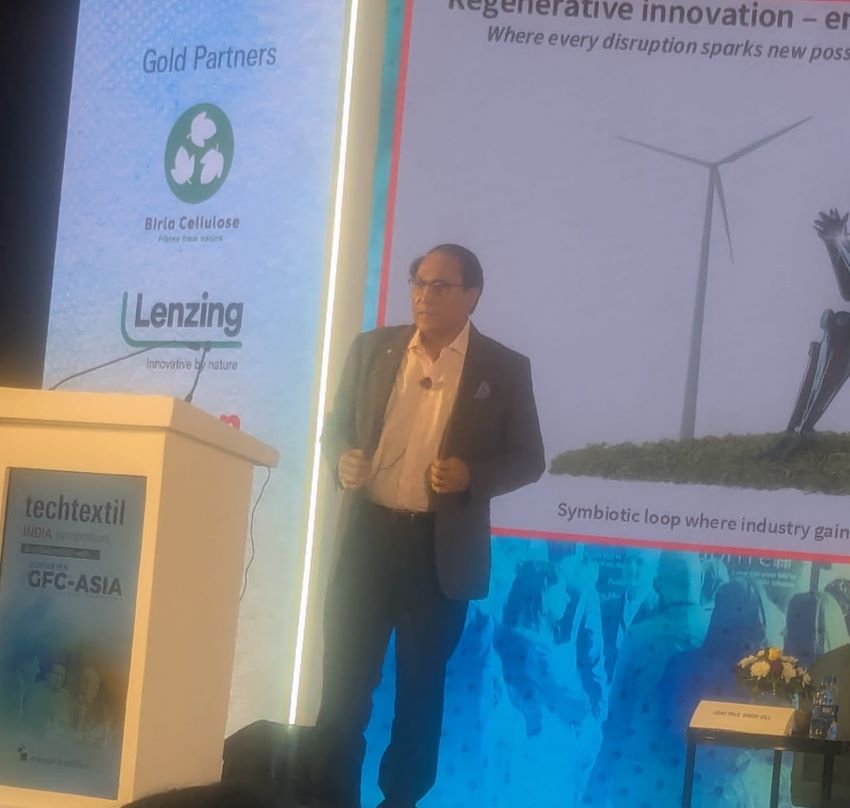FW
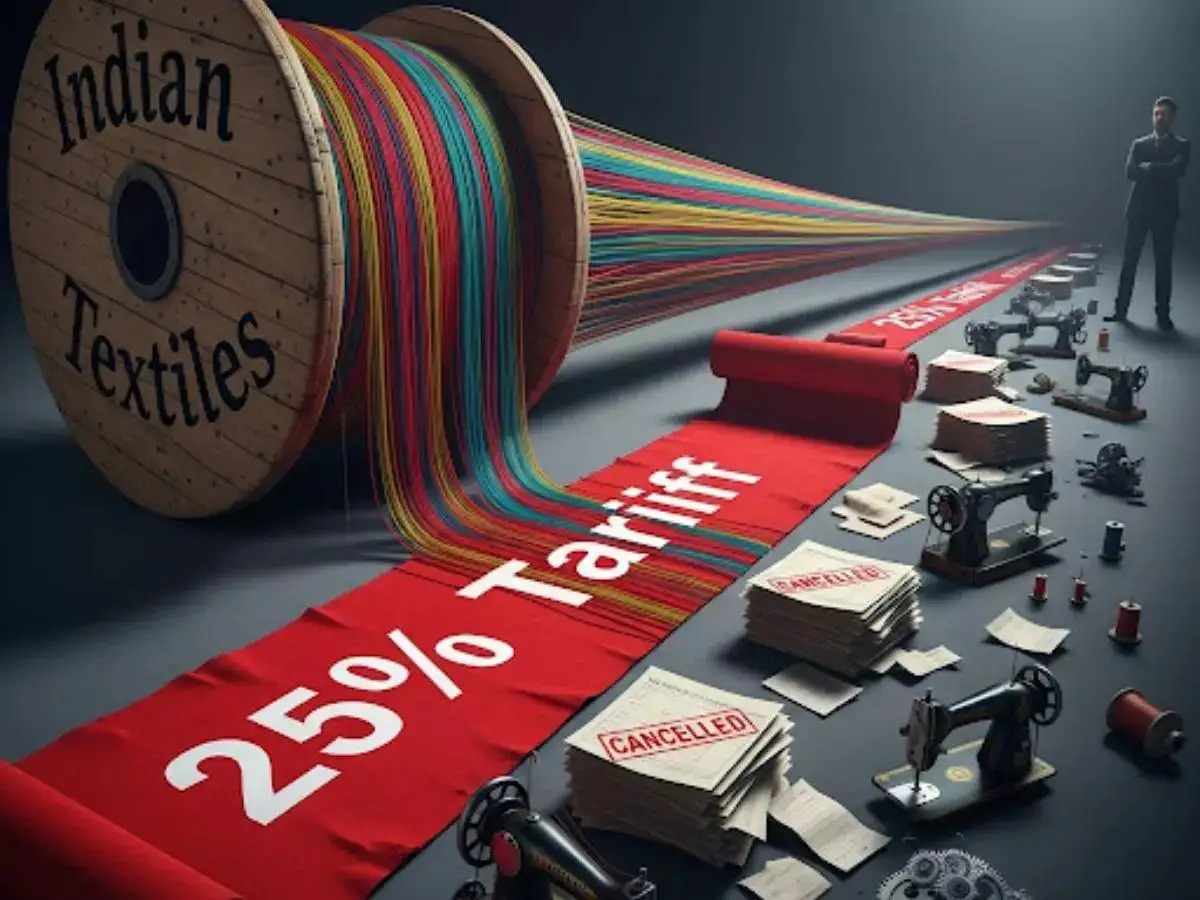
India’s textile and apparel industry is facing an unexpected mid-cycle rupture that is reshaping the sector’s economics far faster than policymakers anticipated. What began as a favourable season for the spinning and raw-material economy, egged on by a weak rupee and heavy government-led cotton procurement has now unravelled into a broad-based export contraction triggered by steep new US tariff slabs. The sector, is suddenly staring at a liquidity spiral that is throttling production, delaying payments and disrupting labour flows in major clusters like Tiruppur, Surat, Ludhiana and Mumbai.
The turning point was in August 2025, when the US raised import duties on several Indian textile categories as high as 50 per cent. Expected to be a temporary pressure point as trade negotiations progressed, the duties have instead persisted, altering procurement behaviour among global buyers and overshadowing the price advantage that depreciating domestic currency and competitive cotton prices typically bring to exporters.
A value chain in disequilibrium
The Indian textile value chain has historically moved in tight correlation: when cotton prices firm up, spinning mills adjust output; yarn prices set the tone for weavers; garmenting units respond to buyer cycles. In November 2025, however, these links have frayed.
Southern India’s spinning belts of Coimbatore, Erode, Salem and parts of Andhra Pradesh are reporting muted activity even as raw cotton prices remain high. The Cotton Corporation of India’s (CCI) aggressive MSP procurement increased fibre prices by Rs 300 to Rs 500 per candy, lifting sentiment among cotton growers. A weaker rupee, nearing Rs 86.2 per US dollar, should have ideally boosted export competitiveness across the chain. Yet, mills are unable to pass on any gains because demand from garmenting units remains sharply depressed.
Data from the Confederation of Indian Textile Industry (CITI) confirms the imbalance. Textile and apparel exports between April and October 2025 fell 1.57 per cent year-on-year. The sharper blow, however, came in October, when cotton yarn, fabrics and made-ups registered a 13.31 per cent decline, the steepest monthly fall in two years. This decline, which typically signals weakening global retail offtake, has been compounded this time by halted US shipments and delayed payments.
A Mumbai-based yarn trader captures the sector’s anxiety succinctly, saying that buyers are unwilling to commit even to small consignments as long as tariff uncertainties linger. With invoices stuck in transit and garmenting units tightening cash flows, fresh bookings have slowed dramatically, creating a downstream pressure that spinning mills are struggling to absorb.
The US duty shock
The tariff increase US has emerged as the most disruptive force in India’s global textile positioning this decade. India’s textiles traditionally do not enjoy the same duty-free access that Bangladesh, Vietnam or Cambodia receive under the US GSP or preferential trade agreements. But with the new slabs stretching up to 50 per cent on certain finished apparel categories, India’s cost disadvantage has widened to 30-35 per cent.
The impact is visible across order books. US buyers, who historically contributed 29 per cent of India’s apparel exports, have cut volumes drastically, in some cases by as much as 70 per cent. The sharpest decline has been recorded in mass-market cotton apparel, home textiles and low-value knitwear segments that constitute the backbone of India’s MSME-led garmenting clusters.
This drop is already altering the financial ecosystem. MSMEs, which make up nearly 70 per cent of India’s textile production units, are now confronting an acute cash squeeze. Payments from overseas clients are being delayed beyond customary 60-90 day cycles, forcing units to rely heavily on working capital loans at a time when borrowing costs remain high. Industry reports estimate that garment units in Tiruppur are holding unsold inventories worth nearly ₹6,800 crore, while several Ludhiana knitwear exporters have reportedly begun furloughing workers to manage fixed costs.
Credit rating agency ICRA’s latest sectoral review reflects the seriousness of the shock. It has revised its outlook for India’s export-oriented apparel industry to ‘Negative’ for FY2026, projecting a revenue decline of 6-9 per cent and a decline of operating profit margins from 10 per cent in FY2025 to nearly 7.5 per cent. This margin drop could rise further if tariffs persist into mid-2026, risking long-term buyer migration to more cost-efficient sourcing destinations.
The liquidity spiral
The most immediate consequence of the tariff regime is the liquidity freeze gripping export hubs. The payment cycles of garment exporters already stretched in a slow global retail environment have increased by an additional 45-60 days, choking the cash flows of small and mid-sized vendors. Banks, wary of rising exposure in the sector, have begun restricting credit limits for high-risk MSMEs. Industry associations warn that Non-Performing Assets (NPAs) in textile-heavy districts could rise by 20-25 per cent over the next two quarters if relief does not arrive.
Garmenting clusters are particularly vulnerable because they operate on thin margins and depend heavily on pre-shipment and post-shipment credit. With buyers deferring shipments, many units are now sitting on completed orders that cannot be dispatched due to payment bottlenecks. The slowdown is also visible in powerloom hubs like Bhiwandi, where loom utilisation reportedly dropped below 40 per cent in November for the first time since the pandemic-era lockdowns.
Gokaldas Exports’ playbook for survival
While the broader sector reels under tariff pressure, a few large players are adapting their expansion strategies to cushion external shocks. Gokaldas Exports, one of India’s oldest and most diversified apparel exporters, illustrates how manufacturers are seeking geographical and product diversification to reduce dependence on US markets.
Founded in 1979, the company built its early business around supplying woven apparel to global brands, but over the past five years it has systematically expanded into knitwear, man-made fibres (MMF) and specialised performance wear. This repositioning is deliberate: MMF-based products face lower volatility in cotton prices and offer wider market access beyond the US, particularly in Europe, the Middle East and Japan. The company’s recent acquisitions have also strengthened its vertical integration, enabling it to reduce lead times at a moment when buyers are increasingly prioritising speed and reliability over cost alone.
Market sentiment remains cautiously optimistic toward the company’s model. Even amid tariff turbulence, Gokaldas Exports’ stock has rallied intermittently on hopes of a pending trade agreement between India and the US. Investors view its strategy coupling government PLI incentives with non-US market expansion as reflective of how the broader industry might restructure to withstand geopolitical risk.
A race against time for policy relief
The outlook for India’s textile and apparel sector now hinges on a narrow set of uncertain variables. The most critical among them is the outcome of the India-US trade negotiation currently underway. Early signals suggest progress, but with US election considerations and India’s need for broader market assurances, timelines remain opaque. Any delay risks accelerating India’s loss of market share to Bangladesh, Vietnam, Turkey and Mexico, countries already positioned to absorb diverted orders.
Yet, amid export turmoil, India’s domestic textile economy is on a different path. The sector is projected to reach $646.96 billion by 2033, driven by rising incomes, premiumisation of apparel, and a nationwide push towards sustainable, MMF product lines. This difference between global stress and domestic growth could give the sector partial insulation, provided the government intervenes swiftly to ease liquidity and expedite tariff negotiations.
Industry leaders warn that without timely relief, structural damage could set in, leading to labour displacement, permanent shutdowns of MSME units and a long-term reconfiguration of global sourcing routes away from India. For now, the industry waits for clarity, its hopes pinned on trade diplomacy, domestic demand resilience and the entrepreneurial ability of manufacturers to adapt their business models in an era defined by volatility.
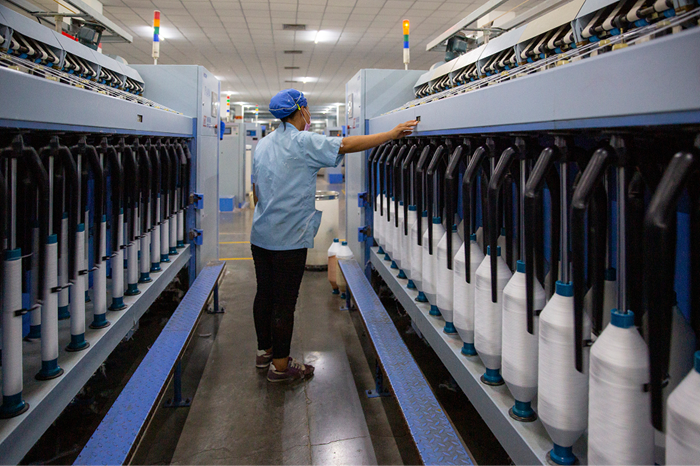
The global apparel sourcing business is redefining the metrics of success beyond traditional labor costs. Led by geopolitical risks, consumer demands for sustainability, and the need for greater agility, brands are adopting multi-regional strategies and looking to a new generation of sourcing partners. The old paradigm of ‘Europe is premium, Asia is cheap’ is giving way to a risk-averse, and value-driven approach.
New metrics for a new era
The most successful brands are no longer just comparing price per unit. They are evaluating the total landed efficiency of a supply chain. This holistic approach considers factors like lead times, shipping costs, inventory risk, and supply chain transparency. A 2024 report by the US Fashion Industry Association (USFIA) highlights this trend, revealing that a record high percentage of companies are sourcing from over 10 countries to reduce growing market risks.
Proximity and flexibility: The rise of nearshoring is a direct response to the need for speed and adaptability. Countries closer to major markets like Portugal is to Europe offer shorter lead times and lower Minimum Order Quantities (MOQs), enabling brands to quickly test new trends with capsule collections and react to real-time consumer demand.
Sustainability as a differentiator: Sustainability is no longer a marketing buzzword but a core operational metric. A 2024 USFIA study found that over 60 per cent of surveyed companies plan to invest more in sourcing sustainable and recycled textile materials. Manufacturers in countries like Portugal are building sustainability into their processes, from using solar-powered facilities to sourcing local yarns, offering a genuine value proposition beyond a simple eco-label.
Technological integration: The apparel supply chain is becoming increasingly digital. Technology, from AI-powered forecasting to blockchain for transparency, is a critical new metric. These tools allow brands to better predict demand, optimize supplier selection, and provide the end-to-end traceability consumers are now demanding.
Beyond Portugal, emerging sourcing hubs
While Portugal is a big player, it's not the only emerging destination. Brands are actively diversifying their networks, creating a more resilient and globally distributed sourcing map.
Turkey, the bridge between continents
Turkey has long been a critical supplier for Europe, leveraging its unique geographical location. With a well-established and vertically integrated textile industry, Turkey offers quick turnaround times and access to a variety of raw materials. Brands like Asos have increased sourcing from Turkey for their fast-fashion lines, using its proximity to avoid the long lead times and shipping costs associated with Asia.
Mexico and the CAFTA-DR region
For US brands, Mexico and the countries in the Dominican Republic-Central American Free Trade Agreement (CAFTA-DR) are becoming significant nearshoring partners. A USFIA study shows a noticeable increase in sourcing from Mexico and CAFTA-DR members. This is driven by the desire for shorter lead times, lower transportation costs, and reduced geopolitical risk. However, a key challenge remains a lack of sufficient access to textile raw materials in the region.
India, the rising powerhouse
India is rapidly emerging as a leading apparel sourcing destination. The 2024 USFIA Benchmarking Study found that for the first time since 2014, more US fashion companies reported sourcing from India than from Bangladesh. Nearly 60 per cent of executives surveyed plan to expand sourcing from India over the next two years, more than any other Asian country. India's appeal is pushed by its local textile manufacturing capabilities, which reduce its dependence on imported components and offer a stable, cost-effective supply chain.
The future of apparel sourcing
The shift isn't a replacement of Asia but a diversification. China, Vietnam, and Bangladesh remain essential for their scale and cost-effectiveness. However, the modern sourcing strategy is about creating a balanced portfolio of suppliers. The smartest brands are no longer picking one region over another but are building multi-region strategies to balance cost, agility, and risk. This great migration is about building a supply chain that is not just efficient, but also resilient, transparent, and aligned with the values of the modern consumer.
The Advanced Recycling Conference (ARC) 2025 successfully convened nearly 220 experts from 28 countries to highlight pioneering advancements and strengthen industry collaboration in recycling diverse materials, including plastics, textiles, and automotive waste.
This year's program focused on the continuous optimization of core technologies, from physical methods like extrusion and dissolution to chemical solvolysis, biochemical enzymolysis, and thermochemical treatments such as pyrolysis and gasification. A key element driving this optimization is the integration of cutting-edge digital solutions, including AI-driven sorting and blockchain traceability, which are essential for ensuring reliable feedstock quality and scaling circular systems amid fluctuating waste volumes.
ARC 2025 also addressed the critical need for chemical recycling to build credibility by demonstrating clear advancements in process efficiency and transparency throughout the value chain. Innovative strategies were explored for complex sectors like textile and automotive recycling to overcome challenging material blends and increasing regulatory pressures. Furthermore, the integration of Carbon Capture and Utilization (CCU) emphasized the industry’s shift toward truly sustainable circular business models. A significant recurring theme was the urgent need for expanding recycling infrastructure to support the large-scale deployment of these advanced technologies and meet ambitious regulatory targets.
The conference facilitated extensive networking, strengthening partnerships, which was further enhanced by a site visit to Chemiepark Knapsack, where participants observed industrial-scale deployment of advanced recycling technologies in action.
By bringing together stakeholders from the technology, policy, and investment spheres, ARC 2025 outlined a clear path for achieving ambitious EU targets. These goals include increasing post-consumer recycled plastics in packaging to between 10 per cent and 35 per cent by 2030 and embedding 25 per cent recycled content in new vehicles. These cooperative efforts are crucial for overcoming challenges related to feedstock availability, variability, and infrastructure gaps, ultimately fueling growth in renewable carbon value chains and advancing the defossilization of the chemical industry.
The Advanced Recycling Conference was supported by visionary sponsors dedicated to advancing recycling solutions, including Gold Sponsor Siemens and Bronze Sponsors Buss ChemTech, Erema Group, and Starlinger.
David Jones, CEO, Scott Fyfe, believes, the 187-year-old chain is poised for a bright future after navigating one of the most challenging periods in its history.
Fyfe’s optimism stems from the improved financial stability of wealthier consumers and a significant $40 million renovation recently completed at its Chatswood Chase store in North Sydney.
However, he concedes that the retail industry is heading into a crucial end-of-year period. The sector’s success is largely dependent on the performance of key shopping events: Black Friday, Cyber Monday, and the Christmas season.
Fyfe has served as the chief executive of the upmarket retailer for five years. He stayed on after the company was acquired by Anchorage Capital Partners, which purchased David Jones in 2022 for less than $100 million from South Africa's Woolworths Holdings (which retains ownership of the Country Road Group).
Anchorage has since initiated a $250 million revitalization plan. This includes a new loyalty program partnership with Qantas and a $60 million technology investment into a new shopping app and an updated website. The journey has been tough, marked by cautious consumer spending and a separation from the Country Road Group that proved more expensive than anticipated.
Europe's leading fashion sourcing show, Source Fashion is tackling the fashion industry's rapidly changing regulatory landscape by launching a vital new resource: the Mini Guide to Textiles Extended Producer Responsibility (EPR) in the EU and UK. This practical guide is designed to help brands, retailers, and producers prepare for the sweeping EPR requirements that will soon take effect under the revised Waste Framework Directive.
With a compliance deadline looming in 2026, the guide offers essential clarity ahead of Source Fashion's next edition, held from January 13-15 at Olympia London.
Extended Producer Responsibility (EPR) fundamentally shifts the burden onto textile producers, brands, and importers to manage their products' entire lifecycle, from design to end-of-life. As part of the EU’s Strategy for Sustainable and Circular Textiles, new regulations will mandate that producers finance and organize textile collection, sorting, reuse, and recycling systems across member states, with similar policies under consideration in the UK.
The concise guide provides a clear overview of these approaching changes, covering who and what EPR applies to, geographical scope across EU and UK markets, key requirements and cost implications, intersections with frameworks like the Eco design for Sustainable Products Regulation (ESPR) and implementation timelines, including a roadmap to compliance by 2025.
Drawing on lessons from international markets where EPR schemes are already established (like France and Australia), the guide includes case studies and best practices. It also addresses significant challenges, such as the lack of regional harmonization and infrastructure investment uncertainty. Critically, it offers a practical checklist of steps for producers, retailers, and brands to begin immediately, including product assessments and appointing legal representatives in each market.
US-based Citi Trends' has raised its full-year guidance on strong Q3, FY25 results.
An off-price value retailer focused primarily on African American families, the company reported strong top-line momentum driven by its ongoing strategic transformation. Their total sales grew by 10.1 per cent from Q3, FY24 to $197.1 million.
Comparable store sales increased by 10.8 per cent as traffic and basket increased. However the company’s loss widened to $6.9 million. Gross margins declined by 90 basis points due to the pull-forward of freight expenses from Q4 to balance the holiday workload.
This strong performance was broad-based across all store groups, geographies, and product categories, fueled by a successful back-to-school season, noted Ken Seipel, CEO.
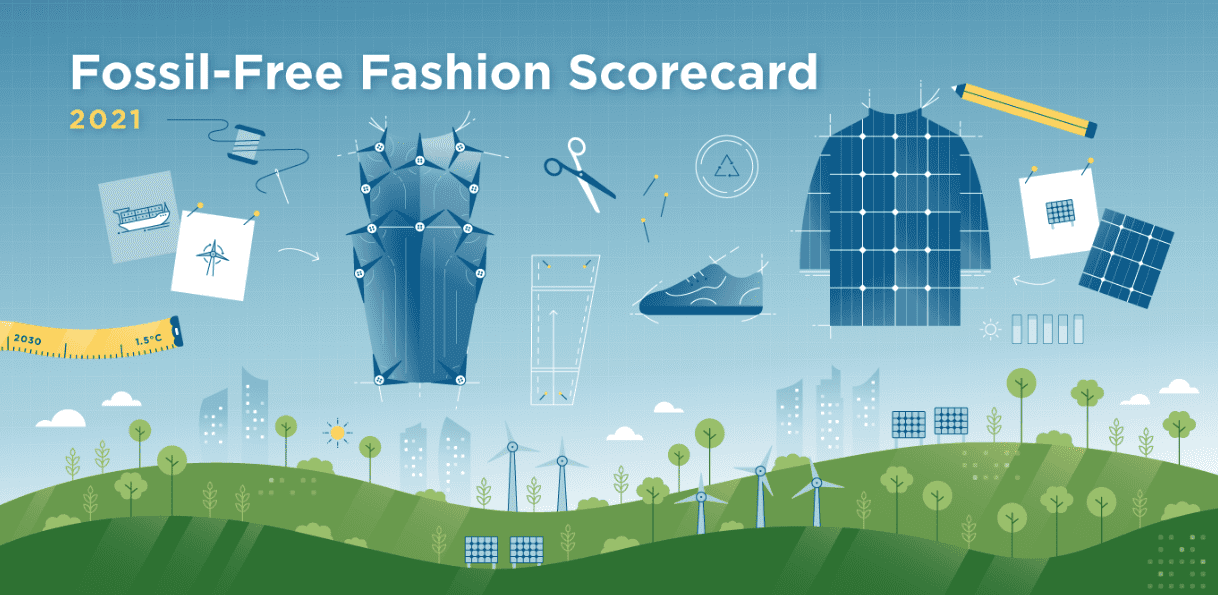
For years, the global fashion industry has promised a cleaner, greener future but 2025’s Fossil-Free Fashion Scorecard by STAND.earth offers a sobering verdict: not a single major brand has earned an ‘A’ for decarbonization. Despite public pledges, glossy sustainability reports, and high-profile climate campaigns, the sector remains on an emissions pathway ‘far from compatible’ with the 1.5°C target.
The scorecard, which assessed 42 of the world’s most influential fashion and apparel companies concludes that while some leaders are emerging, most brands are failing to confront their dependence on fossil fuels. The report also exposes a ‘systemic blindspot’ in how the industry addresses equity and support for workers affected by climate impacts. “The industry has a lot of work left to do to end its symbiosis with the fossil fuel economy,” the report warns a blunt assessment that echoes through the industry’s global supply chains.
When promises meet the planet
Despite years of climate pledges, the report found that the fashion sector’s total emissions trajectory continues to rise, defying its own targets. Only three brands viz. Eileen Fisher, Burberry, and Prada have reduced emissions in line with a 1.5°C pathway. Seventeen brands actually increased their carbon footprints compared to their baseline years.
The scorecard emphasizes that while data transparency is improving, actual decarbonization on the ground remains minimal, especially across the energy-intensive Tier II, III levels of supply chains (fabric dyeing, spinning, and raw material processing).
Who pays for the transition?
Perhaps the most glaring gap is financial. Only six of 42 brands (14 per cent) reported offering any kind of decarbonization project financing to their suppliers. Among these, H&M Group was the sole brand with significant, non-debt-based financing initiatives. In contrast, two-thirds of all brands showed no evidence of financing decarbonization leaving suppliers to bear the costs of transitioning to renewable energy.
This imbalance exposes a deeper structural flaw: while brands set ambitious emissions targets, their manufacturers primarily in Asia remain underfunded, trapped in thin-margin contracts that discourage sustainability investments.
Glimmers of progress
Not all the findings were bleak. There are visible shifts in two areas: renewable energy targets and circular fashion. 12 of 42 companies (29 per cent) now have measurable supply chain renewable electricity goals, up from only five in 2023. Nearly 95 per cent of brands now offer resale or repair programs, showcasing circularity has moved from the fringes of sustainability to the mainstream business model. However, the report notes that these programs often have limited scale and negligible impact on overall emissions unless integrated with material phase-outs and renewable sourcing.
Fossil fibers still rule the loom
Almost 70 per cent of all textile fibers are fossil-fuel-based synthetics such as polyester, nylon, and acrylic, a figure that has barely budged despite growing awareness. Only six brands (14 per cent) have committed to phasing out fossil-based materials. Among leaders, Kering (C+) and Eileen Fisher (B-) earned top marks for advancing regenerative material sourcing and reducing synthetic reliance. Yet even these leaders struggle against the global economics of synthetics: oil-based fibers remain far cheaper than natural or recycled alternatives.
H&M Group, the decarbonization outlier
The Scorecard’s top performer, H&M Group (B+), demonstrates what leadership looks like in practice.
• Transparency: H&M earned an A+ in Commitments and Transparency for disclosing a detailed Scope 3 roadmap that includes Tier III suppliers, a rarity among peers.
• Investment: The company publicly reported investing SEK 1.7 billion ($160 million) in decarbonization projects across its value chain, setting a new standard for financial disclosure.
• Renewables: By 2024, H&M’s supply chain achieved 36 per cent renewable electricity, with 9 per cent generated on-site and 7 per cent sourced through PPAs.
• Advocacy: It also became the first global brand to sign a green energy MOU in Vietnam under the country’s new Direct Power Purchase Agreement (DPPA), signaling a hands-on approach to policy engagement.
The report notes that this “model of supplier financing and policy advocacy” is the blueprint others should follow though even H&M, with its B+ rating, remains short of full fossil fuel phase-out alignment.
The polluters’ list
At the other end of the spectrum lie brands whose emissions are skyrocketing led by Shein, the ultra-fast fashion giant.
• Shein’s emissions surged from 9.17 million metric tons CO₂e in 2022 to 16.68 million in 2023 a 170 per cent jump.
• That’s almost equivalent to the annual emissions of Lebanon, according to the report.
• The main culprit: air freight, which accounts for nearly 40 per cent of its upstream shipping emissions.
Alongside Shein, other laggards include Boohoo, Under Armour, Next, Aritzia, and Columbia, all of which received ‘F’ grades in multiple categories, primarily for failing to set Scope 3 reduction targets or to disclose credible data.
The message is clear: fast fashion’s growth is directly tied to escalating pollution and without intervention, the climate cost will be catastrophic.
The human blindspot
In one of its starkest findings, STAND.earth’s Scorecard reveals that not a single brand could show evidence of climate adaptation programs for workers despite growing climate-related risks across textile-producing regions.
Floods in Bangladesh, heatwaves in India, and droughts in Vietnam threaten supply chain continuity and worker safety. Yet, none of the 42 brands had designed or funded programs developed in consultation with local stakeholders. This ‘dangerous blindspot’ the report warns, could undermine the very communities on which the global fashion system depends.
What comes next
The report ends with a stark call to action. In a world grappling with trade wars, greenwashing probes, and inflation, climate action risks being deprioritized. But abandoning it now, STAND.earth argues, would mean irreparable harm to both supply chains and people.
To align with a 1.5°C pathway and ensure justice for workers, brands must:
1. Fund the transition: Move from loan-based support to direct, non-debt financing for suppliers including long-term purchasing contracts that guarantee revenue stability.
2. Phase out fossil fibers: Commit to a transparent, time-bound plan for eliminating oil-derived materials and invest in scaling regenerative and circular fibers.
3. Support workers: Create worker-centered adaptation plans, co-designed with local communities, to safeguard livelihoods against climate shocks.
4. Clean up shipping: Cap air freight at 1 per cent of total goods and accelerate adoption of zero-emission vessels and last-mile logistics.
From optics to outcomes
Fashion’s climate credibility is on trial and 2025’s Scorecard delivers a verdict of missed opportunities. The few bright spots, like H&M’s transparency and Kering’s material innovation, are exceptions in a sector still powered literally and figuratively by fossil fuels. For an industry built on reinvention, fashion’s slow pivot toward sustainability is paradoxical. Without decisive financial, material, and human investments, its climate promises risk becoming the next season’s discarded trend.
Premium stretch fiber by Asahi Kasei, Roica is set to make a significant return to ISPO Munich 2025, showcasing its latest advancements in responsible stretch fiber technology. The brand will be featured prominently at the Asahi Kasei booth.
This year, Roica is highlighting a curated collection of samples from seven key European textile partners. These collaborations demonstrate the versatile and high-performance applications of Roica in the sports and activewear market. These partners include Brugnoli, Cifra, Iluna Group, Inplet Pletiva, Penn Solutions, Sitip, Tessitura Colombo Antonio
The official uniforms for the Expo 2025 Osaka, Kansai are adopting Roica V550. This material is being used in collaboration with Craftevo-V&A Japan, pioneering a new model for compostable, circular event apparel.
A strategic partnership with Nilit is focused on developing an innovative fabric concept. This concept aims for a reduced environmental impact by combining Nilit's Sensil By-Nature Nylon 6.6 with Roica produced using a mass balance approach with renewable feedstock.
India’s textile sector is currently undergoing a significant development as a new wave of consolidation begins in Surat, the country’s largest textile manufacturing hub. Market sources confirm,a major investment push is underway, highlighted by the recent acquisition of more than eight textile manufacturing companies in the city. The combined output of these acquired units is estimated to cover nearly 0.8 percent of the national textile market, signaling one of the most notable expansion steps in the sector this year.
The acquisitions have immediately created a ripple effect across Surat’s wholesale markets. Traders report visible shifts in early demand, competitive pricing strategies, and supply-chain expectations. Analysts describe the development as a ‘clear disruption’ led by a new entrant possessing significant financial strength and a clear long-term intent. Early assessments suggest this move could profoundly alter competitive dynamics, especially for mid-sized textile producers.
Industry sources indicate that negotiations are currently progressing for the acquisition of multiple large-scale fabric manufacturing units, which would further expand the new entity's footprint in Surat. Crucially, the investor is also reportedly exploring extensive land procurement for cotton cultivation.
This move hints at the establishment of a fully integrated value chain that spans raw materials, production, and distribution. If successfully executed, such a model could fundamentally reshape cost efficiencies and manufacturing capabilities across the entire region.
The entire investment push is being spearheaded by Ramkumar Sankarapandian, Founder and CEO, Qpay and SpaceQ. Ramkumar is well-known for successfully scaling Qpay across international markets and guiding SpaceQ’s progress in the space-technology domain. His entry into textiles has attracted industry-wide attention due to his established track record of leveraging technology, operational discipline, and global networks to scale businesses.
Sector analysts say his involvement signals a long-term transformation rather than a marginal presence. As one expert noted, Sankarapandian’s strategy reflects the foundation of a future textile empire.
With more transactions anticipated in the coming months, the textile industry is closely monitoring this expansion, anticipating broader shifts in manufacturing capacities, supply chains, and overall market competitiveness across India.
YKK Corporation has announced its highly anticipated debut at CES 2026 (Consumer Electronics Show), the world's largest technology exhibition, held in Las Vegas, Nevada, in January 2026. YKK will showcase groundbreaking innovations that focus on ‘Fastening the Future: Where Technology Meets Design,’ demonstrating how the company is redefining everyday functionality.
At its inaugural CES presence, YKK will present new possibilities for fastening solutions that seamlessly fuse technology and design. Visitors will discover how YKK is leveraging smart, sustainable, and connected technologies across its vast product lineup, which includes zippers, snaps, hook-and-loop fasteners, and buckles, available in over 70 countries.
A key highlight of the exhibition will be a range of innovative concept models, including an intriguing autonomous zipper. Through these exhibits, YKK aims to share its vision for creating new value and shaping the future of manufacturing through advanced fastening technology.

